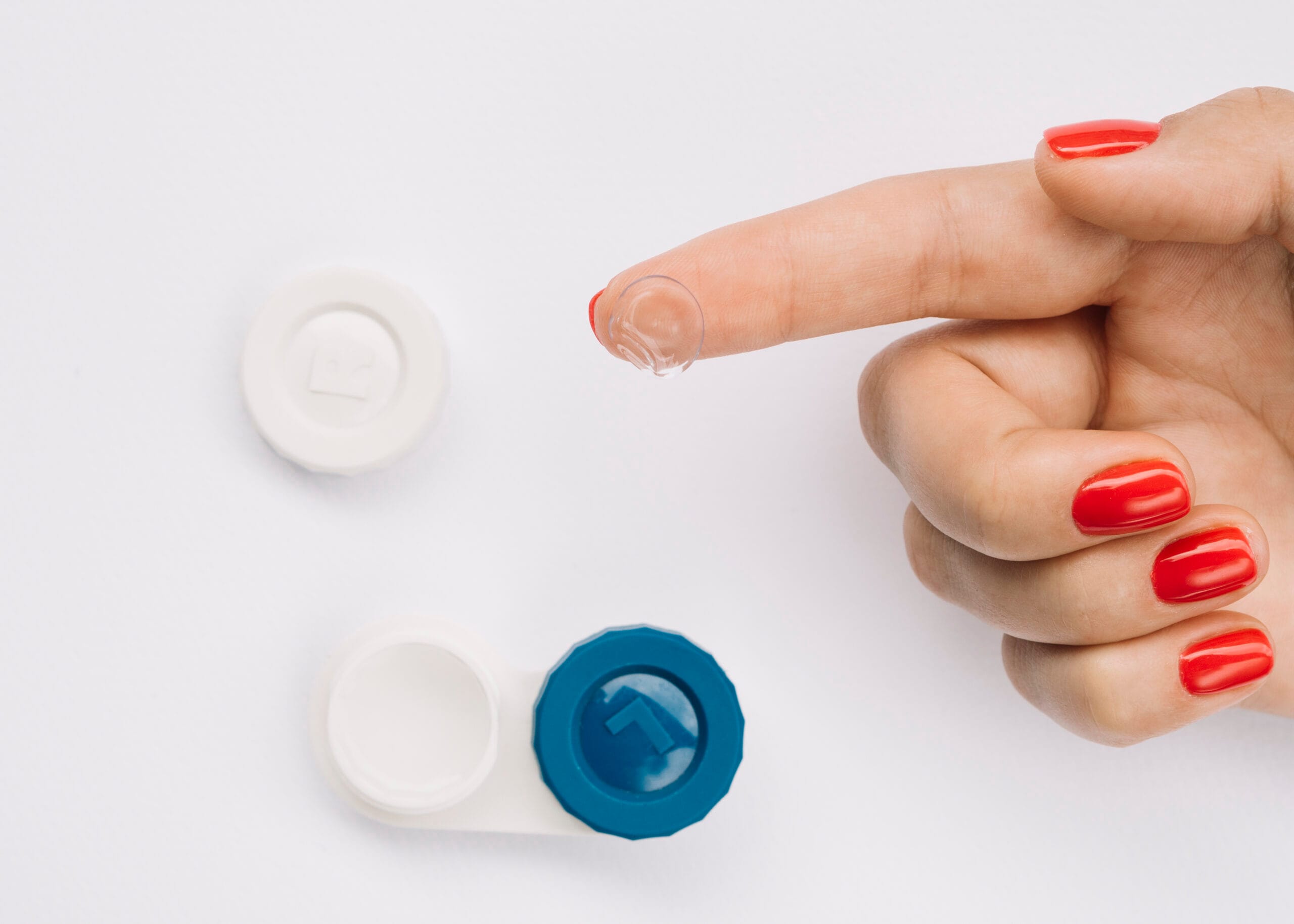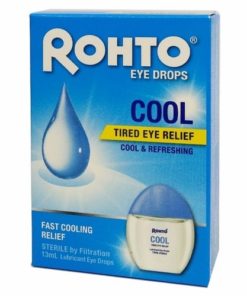Tips
Mastering the Transition to Contact Lenses: Your Step-by-Step Guide to Success
Transition to contact lens need not be a daunting process; instead, it can be simple especially overtime. Here are some of the few pointers you can follow to make your transition seamless.
Transition Tip #1: Find the Perfect Fit for Optimal Comfort and Vision
Fitting is the most important part of changing over to contact lenses. First, one must consult an optometrist specialising in contact lens fitting. A thorough eye check will be needed to update the prescription and establish the health of the eyes. They will take the measurement of the curvature and diameter of your cornea during the fitting. This is to ascertain the best type and size of lenses that are suitable for you.
This personalised fitting avoids discomfort, poor vision or eye strain. Lenses depend on your eye shape, lifestyle and what one intends to correct — nearsightedness, farsightedness or astigmatism. Your optometrist may also recommend a particular lens material suitable for your eye health. These may include silicone hydrogel for increased oxygen flow or lenses with UV protection for outdoor activities.
-
 Rohto AQUA Eye Drops 13mlSGD 6.80
Rohto AQUA Eye Drops 13mlSGD 6.80 -
 Rohto COOL Eye Drops 13mlSGD 6.80
Rohto COOL Eye Drops 13mlSGD 6.80 -
 Alcon Systane Ultra Eye Drops 5mlSGD 6.80
Alcon Systane Ultra Eye Drops 5mlSGD 6.80
After the fitting, most eye care professionals will provide trial lenses to ensure comfort and proper vision. These lenses allow you to test the fit before committing to a long-term solution. It is also very important to have a proper wearing schedule. Start with just a few hours a day and progress gradually.
A good fit shouldn’t feel like anything at all and shouldn’t irritate your eyes in any way. If anything goes amiss, speak with the optometrist about whatever problem you have with those lenses. A proper fit is the key to a smooth transition and a comfortable contact lens experience.
Transition Tip #2: Prioritize Comfort to Make the Switch Seamless

Comfort is the most important issue when getting used to contact lenses. In the initial stage, your eyes may take time adjusting to the foreignness of lenses. Comfort has to be ensured for a successful adaptation. Begin by using a wearing schedule in a gradual manner. Wearing for just a few hours a day should be gradually increased as the eyes get used to the lenses. This allows your eyes to readjust without straining too hard.
Also, it is rather important to take into consideration the quality of the lenses one uses. Go back to your eye care professional to be sure the lenses fit perfectly and suit your lifestyle. Poor fitting can cause discomfort, irritations or even impairment to the eye. For added comfort, keep your lenses clean and free of debris. Follow the proper cleaning routine, especially for reusable lenses. Using the recommended cleaning solution ensures that your lenses stay free from bacteria, which can cause irritation.
If you experience dryness or discomfort, don’t hesitate to use lubricating eye drops designed for contact lens wearers. The application of this can help comfort them immensely. Lastly, discomfort is something that should not be disregarded. In the event of continued pain or persisting irritation, the lenses should be taken off. Also, an optometrist should be consulted. By taking this very important step towards comfort, one can make wearing contact lenses a smooth process of everyday life.
Transition Tip #3: Be Patient—Adjusting to Contact Lenses Takes Time
Transitioning into contact lenses may require some degree of patience and persistence. One’s eyes accommodate themselves to a new kind of vision. It’s important to understand that it’s a process that never really occurs overnight. It could take some time to get used to them. Feeling a slight discomfort, dryness or even blurry visual disturbances at the beginning is quite normal. This is normal as your eyes become accustomed to the contact lenses.
Instead of getting irritated, one should allow their eyes to get used to it in due time. For a few hours a day is how you should wear contacts to begin with. You can keep increasing these hours as your eyes get accustomed. In such cases, forcing speeds up the process, leading to irritation or discomfort; so, it’s better if it’s taken slowly. Also, be patient with yourself when you practice the insertion and removal of lenses. This also takes time to master. It is normal to make one or two mistakes here and there but after due practice, this will be natural.
-
 MaxVUE Airsoft Multifocal Monthly Disposable Contact LensesSGD 58.00
MaxVUE Airsoft Multifocal Monthly Disposable Contact LensesSGD 58.00 -
 FreshKon 1-Day Charmante Colors LensesSGD 33.00
FreshKon 1-Day Charmante Colors LensesSGD 33.00 -
 FreshKon All Day O2xy Colour MonthlySGD 27.00
FreshKon All Day O2xy Colour MonthlySGD 27.00 -
 FreshKon 1-Day All Day O2xy ColourSGD 29.00
FreshKon 1-Day All Day O2xy ColourSGD 29.00 -
Product on sale
 Olens 1Day French Gold 3con Gray Daily Coloured LensesSGD 50.80
Olens 1Day French Gold 3con Gray Daily Coloured LensesSGD 50.80 -
 Alcon PRECISION1 for Astigmatism Contact LensesSGD 75.00
Alcon PRECISION1 for Astigmatism Contact LensesSGD 75.00
For ongoing problems such as discomfort and dryness, do not hesitate to seek your eye care professional for advice. They will be able to troubleshoot and advise changes that may include trying a different type of lens or adding lubricating eye drops. By embracing the adjustment period and being patient, you’ll find that wearing contact lenses soon becomes second nature, giving you the freedom and convenience of clear vision without the hassle of glasses.
Transition Tip #4: Stay Hydrated to Keep Your Eyes and Lenses Fresh

Adequate hydration is one of the most important yet commonly neglected aspects of a successful transition to contact lenses. When your eyes are adjusting to contact lenses especially during the first few days, they may be dry or irritated. This discomfort could be heightened by dehydration because the eyes need proper moisture to maintain the lenses in place and avoid dryness.
Drinking enough water throughout the day will help your body, including your eyes, keep its natural moisture balance so your lenses will be comfortable. Well-hydrated eyes will produce the right amount of tears to keep the lenses from feeling scratchy or making your vision blurry. In addition, hydration diminishes the chances of irritability in the eyes and resultant weariness, a usual grouse among fresh lens wearers especially if one has to spend considerable hours in front of the screens. In addition to drinking water, there is also a requirement for preservative-free, lubricating eye drops recommended by the optometrist to assist in soothing dryness and enhance internal hydration. However, only using drops is no alternative to internal hydration.
While adjusting to wearing contact lenses, it’s important to remember that the more moisture, the merrier — not just for comfort, but for the health of your eyes, period. Try to drink at least 8 glasses of water a day and if you experience increased dryness or irritation, reassess your habits. Hydration keeps your eyes nourished which goes a long way in keeping your contact lens experience much smoother and more comfortable.
Transition Tip #5: Always Keep a Backup Pair of Glasses Handy
Having a spare pair of glasses is part of the process in managing a transition to contact lenses. As much as contact lenses offer convenience and freedom especially for active people or those who like the aesthetics of not having to wear glasses, there are times when the contacts may not be suitable.
A spare pair of glasses means one is ready for times when wearing contacts is not comfortable or feasible. For example, when having dry eyes or irritation, one can take a break from contacts and switch into wearing glasses to give their eyes the rest they need. Another instance is when you’re feeling really sick or have allergies and need something that doesn’t touch your eyes to irritate them further.
-
 MaxVUE Airsoft Multifocal Monthly Disposable Contact LensesSGD 58.00
MaxVUE Airsoft Multifocal Monthly Disposable Contact LensesSGD 58.00 -
 FreshKon 1-Day Charmante Colors LensesSGD 33.00
FreshKon 1-Day Charmante Colors LensesSGD 33.00 -
 FreshKon All Day O2xy Colour MonthlySGD 27.00
FreshKon All Day O2xy Colour MonthlySGD 27.00 -
 FreshKon 1-Day All Day O2xy ColourSGD 29.00
FreshKon 1-Day All Day O2xy ColourSGD 29.00 -
Product on sale
 Olens 1Day French Gold 3con Gray Daily Coloured LensesSGD 50.80
Olens 1Day French Gold 3con Gray Daily Coloured LensesSGD 50.80 -
 Alcon PRECISION1 for Astigmatism Contact LensesSGD 75.00
Alcon PRECISION1 for Astigmatism Contact LensesSGD 75.00
Also, at the start of contact lenses, one might feel uncomfortable or find the process of putting them in and out a little bit challenging. Having glasses handy eliminates stress when one is learning the ropes and will just give up and maybe try it later. Having a spare pair is not only practical but also in case something happens to your contact lenses such as getting lost or drying out on you during the day.
An easy way to be prepared while making the transition smoother and as painless as possible would be with a backup plan. Knowing that safety net is there, whether you are at home, at work or on the go, can be a soothing balm as you get used to your new routine with contact lenses.

We are a company of optometrists & opticians. We focus on providing our customers with their preferred optical products to improve visual acuity and enhance their quality of life. At PopularLens, you will find niche and exclusive brands.
 Free Shipping within SG With Order Over $80
Free Shipping within SG With Order Over $80 Lowest Price Guarantee
Lowest Price Guarantee









